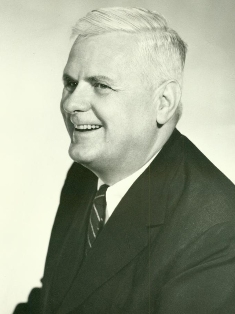JavaScript in a Single Arrow
Lambda (𝛌) Calculus,
- Mathematical formalism
- Invented by this hero (Alonzo Church) starting 1932:

- Universal model of computation (Turing-complete) (NBD)
What is Lamda Calculus ?
| ** Lambda function (𝛌) ** | ** Arrow function (=>) ** |
|
|---|---|---|
| used for | thinking | programming |
| inputs | 1 | 0+ |
| outputs | 1 | 0+ |
| side effects? | no way! | maybe |
If we treat => like 𝛌, what can we do with it?
| ** Lambda function (𝛌) ** | ** Arrow function (=>)** |
|
|---|---|---|
| making one (“abstraction”) |
λx.x | x => x |
| faking multiple args | λx.λy.x+y | (x, y) => x + yx => y => x + y |
| using one (“application”) |
(λx.λy.x+y) 5 1 5+1 6 |
(x => y => x + y)(5)(1)5+16 |
Numbers
What can we count if all we have are functions?
Yes, you can define numbers (and indeed, arbitrary data types) inside the lambda calculus. Here’s the idea. -adding numbers in LC
The simplest numbers to work with are the natural numbers: 0, 1, 2, 3, and so on.
Peano Axioms describes this as follows:
- 0 is a natural number
- if
na natural number, then Sn is a natural number.
S denotes the successor of n or n+1.
First few Peano natural numbers
0, S0, SS0, SSS0, and so on - it’s a unary representation.
We can represent function applications in lamda calculus, hence, we can easily represent Sn, however the problem is that we don’t know how to represent 0 and S themselves.
TLDR: We can count function applications (calls)!
Let’s write x for the 0 we’re given, and f for the S we’re given. Then we can represent the first few numbers as follows:
- zero
'λfx.x'=>f => x => x - one
'λfx.fx'=>f => x => f(x) - two
'λfx.f(fx)'=>f => x => f(f(x))
Higher Numbers
Successor function : given a number,get the next number
var nextn = n => f => x => f(n(f)(x));
var four = nextn(three);
var five = nextn(nextn(three));
var six = nextn(nextn(nextn(three)));
var seven = nextn(nextn(nextn(nextn(three))));
Arithmetic
How can we add two numbers n and m, when numbers are call-counters?
Call the function n times, then call it m more times!
var add = n => m => f => x => m(f)(n(f)(x));
What about multiplying n and m?
var mul = n => m => f => x => m(n(f))(x);
Booleans! Conditionals!
<boolean> ? <then do this> : <else do this>
var ifThenElse = bool => thn => els => bool(thn)(els);
var troo = thn => els => thn;
var falz = thn => els => els;
Logic
- not
bool => thn => els => bool(els)(thn) - or
A => B => A(A)(B) - and
A => B => A(B)(A)
Datastructures
- list
- pairs
-
fibbo
Acomplishments
- Data
- (natural) numbers
- booleans
- Arithmetic
- Logic & Control flow
Representing data this way is called…
Church Encoding
Repl.it
There’s so much more we could do!
- Subtract, Divide
- Successor, Predecessor
- Predicates (e.g.
isZero,isEven, …) - (In)equality
- Strings (as lists of characters represented by their char codes)
- Lists (as nested pairs) & list manipulations (e.g.
map,reduce,filter) - …y’know, all of computation
Learning Resources
The Universe in a Single Arrow
Functional Programming With JavaScript
Structure and Interpretation of Computer Programs